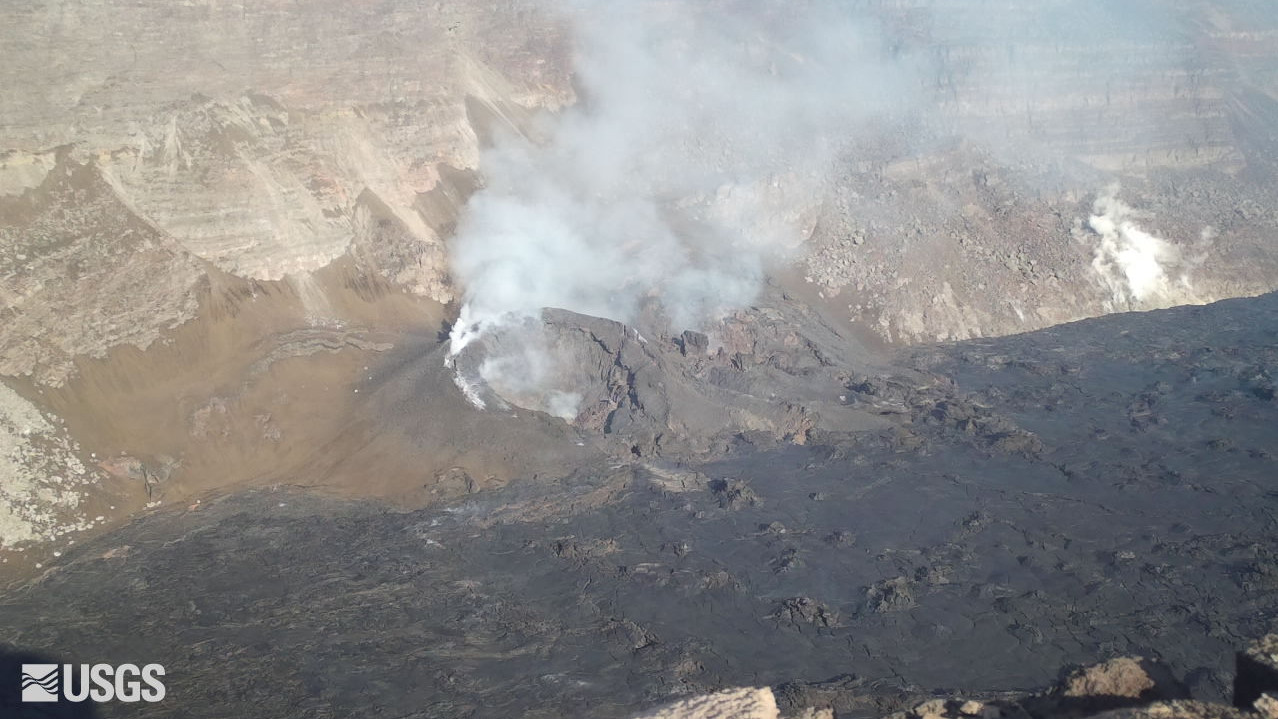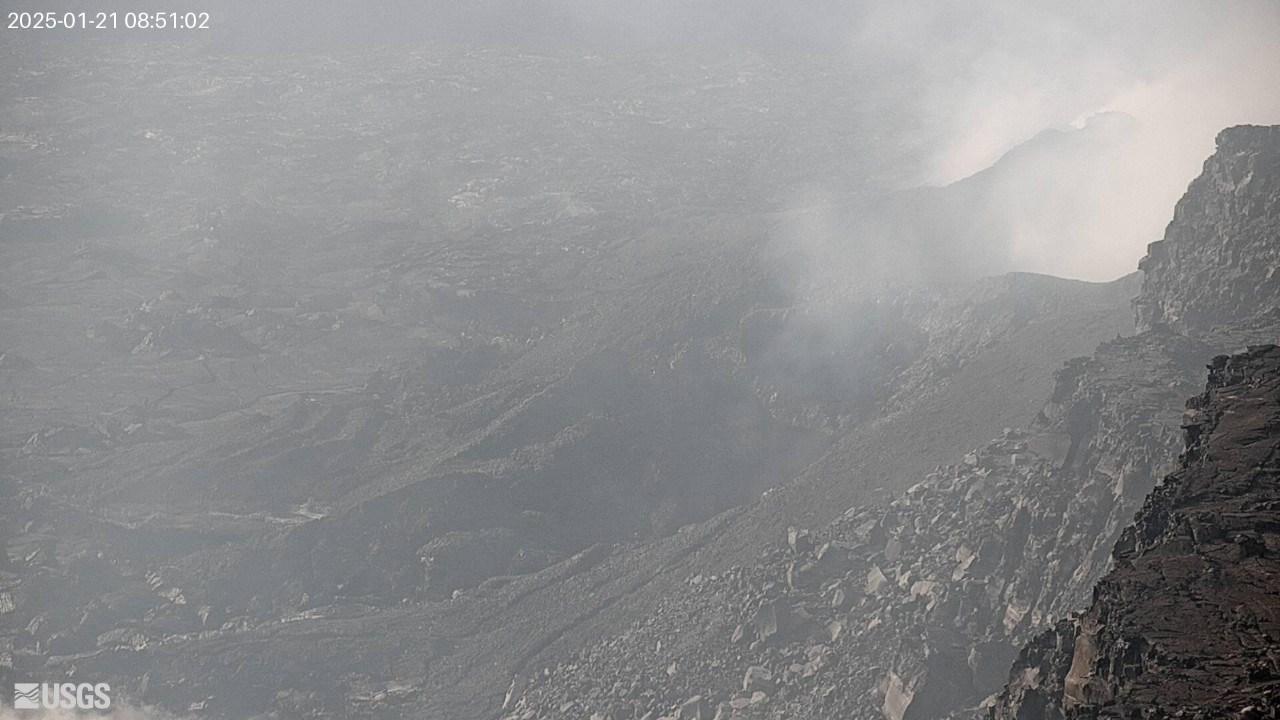(BIVN) – Kīlauea is not erupting, and the USGS Volcano Alert Level remains at WATCH.
The summit eruption that began on December 23 remains paused, after the fourth eruptive episode ended on January 18. Scientists say glow from the north vent remains strong, “but is diminished on the south vent and the crater floor has been almost entirely dark since the evening of January 19.”
The USGS Hawaiian Volcano Observatory says strong glow from the north vent indicates that magma remains close to the surface of Halemaʻumaʻu, and geologists have calculated a possible window for activity to resume.
From the Tuesday update by the USGS HVO:
Summit Eruption Observations: The summit eruption at Kīlauea volcano that began on December 23 ended its fourth eruptive episode around 10:10 a.m. H.S.T. Saturday January 18. Activity greatly decreased at approximately 9:45 a.m. when the north vent fountain and associated lava flow stopped erupting, and south vent activity greatly diminished at the same time. Lava continued to flow from south vent for another 20 minutes at a much reduced rate, and stopped erupting by 10:10 a.m. Since then, strong glow has continued from the north vent but glow from the south vent is reduced to just a few spots. Breakouts and overturning crustal plates exposing molten lava occurred across the crater floor for the first 24 hours after the pause. Since the evening of January 19, there have only been a few scattered points of glow on the crater floor. Strong glow from the north vent indicates that magma remains close to the surface. Pele’s hair formed in earlier stages of episode 4 may continue to be remobilized by winds within the National Park and in nearby communities over the next few days (see Hazards section below).
Summit Instrumental Observations: Seismic tremor is present at low levels. Earthquake activity well below background (only 2 M0+ earthquakes in the last 24 hours) has been detected in the summit region. Summit tiltmeters began recording inflation at about 9:50 a.m. H.S.T, January 18 soon after fountaining activity ceased at the north vent, and have been steadily inflating since. The most recently measured sulfur dioxide (SO2) emission rate was approximately 800 tonnes per day Saturday, January 18, after the end of episode 4, and could be analogous to current conditions. Though significantly lower than rates measured during eruptive episodes 1, 2, and 3 (Kona winds precluded emission rate measurements during episode 4), this value still represents above-background SO2 emissions, and the resulting hazard will be affected by wind conditions (see Hazards section below).
Rift Zone Observations: Seismicity remains low in both the East Rift Zone and Southwest Rift Zone, with counts of shallow earthquakes at background levels. The ESC tiltmeter in the upper East Rift Zone has recorded minor deformation in the last 24 hours. Deformation rates remain low in the middle and lower East Rift Zone and in the Southwest Rift Zone, as recorded by GPS instruments and tiltmeters.
Analysis: The current eruption at the summit of Kīlauea is the sixth eruption since 2020 within Halema’uma’u crater, which sits inside the southern part of Kaluapele. The recent summit eruptions have lasted from one week to more than a year. Like most of the other eruptions, this event began with vigorous lava effusion and volcanic gas emissions from an initial fissure system. The current eruption is marked by episodic fountaining not seen in any of the other eruptions. There have been four fountaining episodes to date lasting from a few hours to over a week. The onset of fountaining of each episode is accompanied by strong deflation of the summit region. Pauses or periods of repose between all of the fountaining episodes are marked by an immediate change from deflation to inflation of the summit as magma recharge repressurizes the magma chamber. The prior four episodes all began after the Uēkahuna tiltmeter recorded between 6 and 12 microradians of inflationary tilt. The Uēkahuna tiltmeter has recorded about 6 microradians of inflationary tilt in the 3 days since episode 4 ended and is continuing to inflate at a rate of 2 microradians per day. If this relatively high rate of inflationary tilt continues and magma remains high in the vent as indicated by strong glow at night, it suggests that it is likely that the fifth fountaining episode could begin sometime between now, Tuesday January 21, and Friday January 24 or Saturday January 25. The probable window of time for the start of the next episode is based upon behavior prior to previous episodes and could be longer if the inflation rate slows or more pressure is required to initiate the next eruptive episode.



by Big Island Video News9:51 am
on at
STORY SUMMARY
HAWAIʻI VOLCANOES NATIONAL PARK - The Kīlauea summit eruption remains paused, while scientists have calculated a possible window for activity to resume.